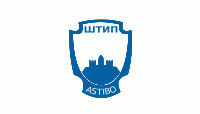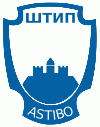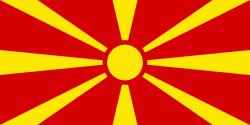Štip (Opština Štip)
 |
 |
As of the 2002 census, the city of Štip had a population of about 43,652.
Štip is the largest textile production center in the country. It is the center of the fashion industry in North Macedonia, as well as the site of the sole public university in eastern North Macedonia, Goce Delčev University of Štip.
The city of Štip is the seat of Štip Municipality.
The name Astibos is mentioned first by the ancient historian Polyaenus in 2nd century BC, who notes that Paeonian kings did ritualistic bathing in the Astibo / Brigantium (today: Bregalnica) river, as a coronation ritual. Astibo is also marked in the Tabula Peutingeriana, as one of the stations from Stobi (near modern Gradsko) to Serdika (today: Sofia). The name evolved from the ancient Astibos, to Byzantine Stipeon, to modern Shtip.
It is generally acknowledged that the Slavic 'Štip' follows Proto-Albanian phonetic rules and was acquired via the Albanian 'Shtip'. Shtip may indicate that Proto-Albanian was spoken in the region in pre-Slavic antiquity. The local Aromanian community also refer to the city as ‘Shtip’.
Map - Štip (Opština Štip)
Map
Country - Republic_of_Macedonia
 |
 |
The region's history begins with the kingdom of Paeonia, a mixed Thraco-Illyrian polity. In the late sixth century BC, the area was subjugated by the Persian Achaemenid Empire, then incorporated into the Kingdom of Macedonia in the fourth century BC. The Roman Republic conquered the region in the second century BC and made it part of the larger province of Macedonia. The area remained part of the Byzantine Empire, but was often raided and settled by Slavic tribes beginning in the sixth century of the Christian era. Following centuries of contention between the Bulgarian, Byzantine, and Serbian Empires, it was part of the Ottoman Empire from the mid-14th until the early 20th century, when, following the Balkan Wars of 1912 and 1913, the modern territory of North Macedonia came under Serbian rule.
Currency / Language
| ISO | Currency | Symbol | Significant figures |
|---|---|---|---|
| MKD | Macedonian denar | ден | 2 |
| ISO | Language |
|---|---|
| SQ | Albanian language |
| MK | Macedonian language |
| SR | Serbian language |
| TR | Turkish language |
















